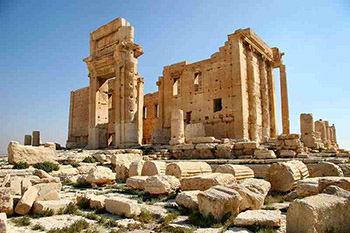An everlasting story contributing to the building of the human civilization. In August, 1933 while a group of Bedouins were burying a dead body, they found a statue of a nude person, headless body with hands over chest weighing about 300 kg on which they found a cuneiform engraving.
Mary dynasty spanned over one hundred and thirty-six years. The kingdom of Mary witnessed a colossal prosperity. There were a lot of palaces and many places for worship in addition to sculptures which reflected the presence of art school in Mesopotamia. Mary was part of the Arab people of the Amorites.
Mary, the tenth city, was built after the flood. The people of Mary was part of al-Amorites who established Mary kingdom to be their capital. Al-Amorites had an important historical role in Der-Ezour for its historical and geographical location.
Excavation targeted the homes in Mary, temples and palaces which were built by kings for the sake of the Gods they worshipped.
Mary’s palace was named “ziemeri leem,” one of the most important discoveries in Tel-Hariri.
Therewere two statues in the palace : the first was called (Ishnoub Ieloum ) and the other represented the (spring), These two statues are exhibited in Aleppo museum today besides a cluster of decorations which prevailed in the Middle Euphrates.
The religion of Mary Kingdom was based on the glorification of water in the Euphrates, and for this reason there was the Goddess of springs called “Ashtar.”
Lions were the best animals for the Godess Ashtar, and her symbol.
Mary’s library comprised twenty five thousand cuneiform clay plates.it dates back to the Seventeenth and eighteenth centuries BC.
Palaces in the kingdom of Mary were built adjacent to the temples to be nearer to Gods and worshipping.
F. al-Taleb
T&E : H.SH

